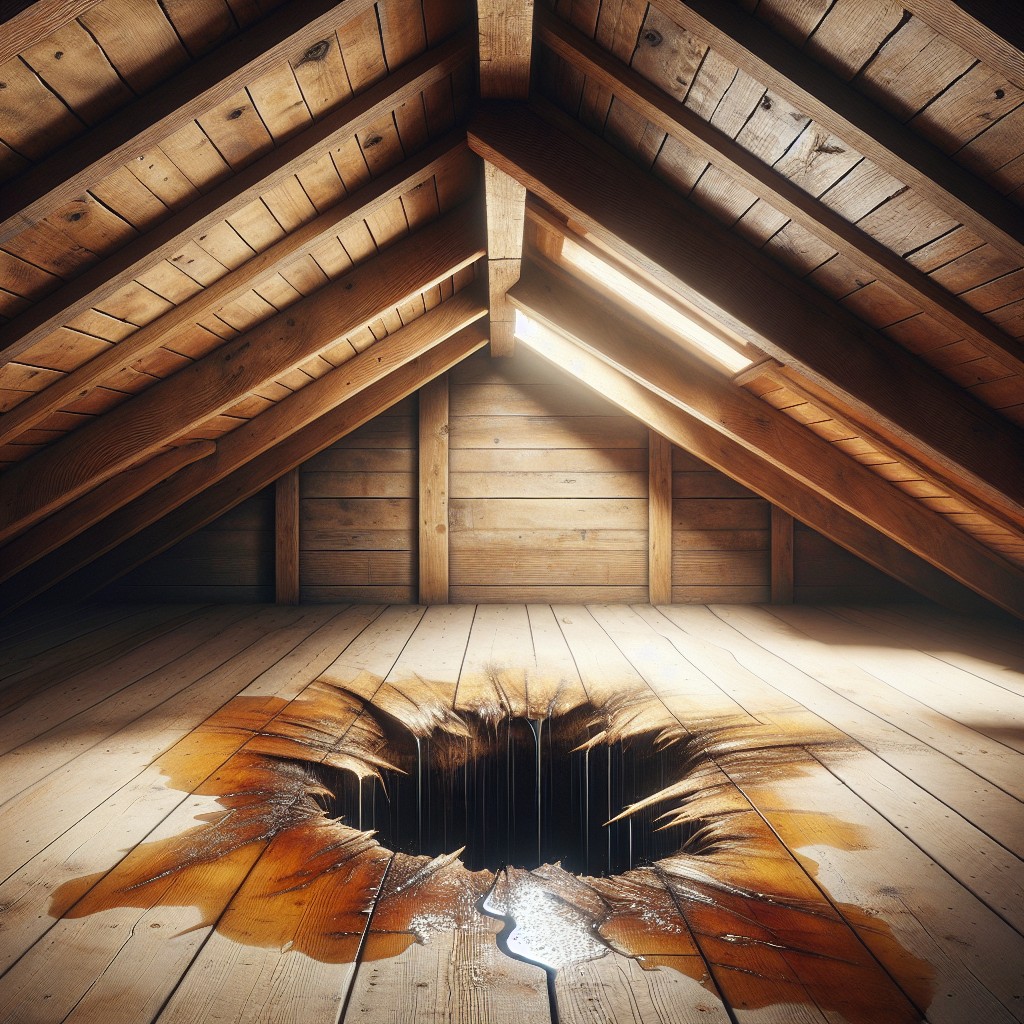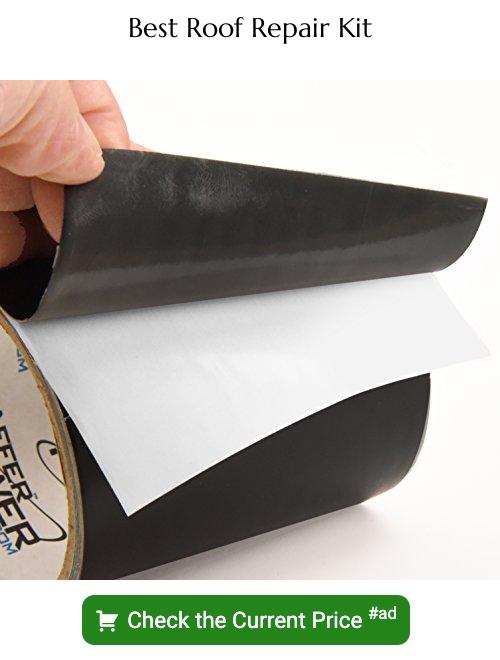Last updated on
In this guide, you will learn the straightforward steps to safely fix a small hole in your roof from the inside.
Key takeaways:
- Identify the source of the roof leak accurately
- Gather the necessary tools for the repair
- Take immediate action to fix the leak from the inside
- Perform regular inspections and maintenance to prevent future leaks
- Consider hiring a professional roofer for complex repairs
Identifying the Source of the Roof Leak

Locating the precise origin of a leak can be tricky, as water may enter through one area but travel before dropping. Begin by examining the attic during the day. Look for rays of light streaming through the roof, as these indicate potential entry points for water. If visual inspection during daylight isn’t sufficient, wait for a rainy day to observe where water is entering the attic space.
Water stains on the roof decking or rafters can also provide clues. Dark, discolored areas or mold growth indicates moisture — and often, the wettest part will be closest to the hole. Remember to use caution when moving around in the attic, stepping only on the joists to avoid potential damage to the ceiling below.
Lastly, inspect around roof penetrations such as vents, chimneys, and plumbing stacks, as these areas are common sites for leaks due to compromised seals or flashing. It’s crucial to determine the leak’s cause accurately to ensure the repair addresses the root problem effectively.
Tools You’ll Need
Before initiating the repair, gather the necessary materials for a streamlined and effective process:
- Claw hammer or flat pry bar: for removing any damaged shingles or decking.
- Roofing sealant or caulk: to create a waterproof barrier over the hole.
- Putty knife: to evenly spread the sealant.
- Roofing tar: an alternative to sealant for creating a waterproof patch.
- Roofing fabric or patching tape: reinforces the seal over small holes.
- Scissors or utility knife: to cut the fabric or tape to size.
- Flashlight: for visibility in attic spaces.
- Safety gloves and glasses: to protect your hands and eyes during repair.
These tools not only aid in the immediate repair but ensure a safe and efficient process.
Fixing the Leak From the Inside
When addressing a small hole in your roof from the inside, immediate action can prevent further damage:
- Clear the area: Remove insulation or any other objects near the leak to assess the damage clearly.
- Contain the leak: Place a bucket or container beneath the hole to catch any water that may enter before repair.
- Apply roofing tape: Cover the hole with a piece of roofing tape to act as a temporary barrier against water.
- Cut a piece of plywood: Depending on the size of the hole, cut a sufficiently-sized piece of plywood that can be secured over the hole.
- Seal the edges: Use roofing sealant to coat the edges of the plywood, creating a watertight seal on the interior surface of the roof.
- Secure the plywood: Fasten the board with screws to ensure it stays in place until permanent repairs can be made from the outside.
Remember, this is a temporary solution meant to minimize water damage until a professional can perform a comprehensive fix.
Preventing Future Leaks
Regular inspections are key in thwarting roof leaks. At least twice a year, perform a thorough check, especially after heavy storms. Look for missing, damaged, or aging shingles and address these issues promptly to prevent water from infiltrating your roof.
Keep gutters and downspouts clear of debris. When they’re clogged, water can back up and seep under roofing materials, leading to leaks. Properly functioning gutters and downspouts direct water away from the roof and the foundation of your home.
Trim tree branches that hang over the roof. Overhanging limbs can scrape roofing materials and deposit debris that encourages water pooling and potential leaks.
Ensure adequate attic ventilation. Poor ventilation can cause heat and moisture to build up, damaging rafters, insulation, and shingles, which can lead to leaks.
Finally, maintain seals around roof penetrations such as vents, chimneys, and skylights. Check the flashing in these areas regularly and reseal if necessary to maintain a watertight barrier.
You Can Always Call a Professional
While a small hole in your roof may seem manageable, tackling roof repairs can be risky and complicated. A professional roofer brings expertise in identifying and properly fixing roof damage, ensuring the repair is long-lasting and up to code. Professional intervention can also prevent potential warranty issues that might arise from DIY repairs.
Additionally, roofers can inspect for any other issues that may have gone unnoticed, providing peace of mind and safeguarding your home against future leaks. Hiring a professional is a prudent choice if you’re not confident in performing the repair or if the damage appears extensive upon closer inspection.





